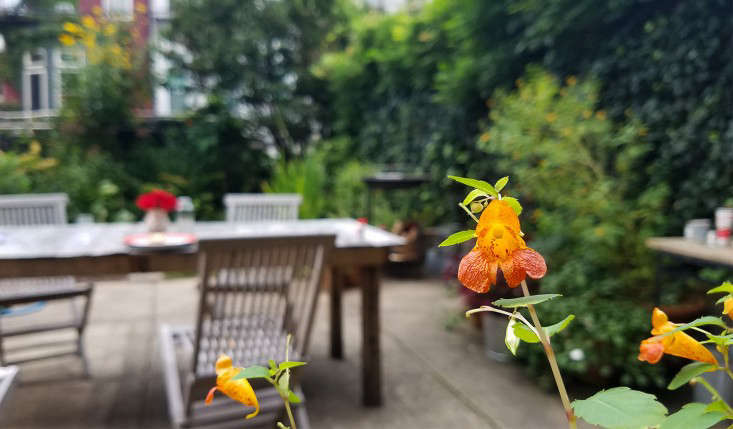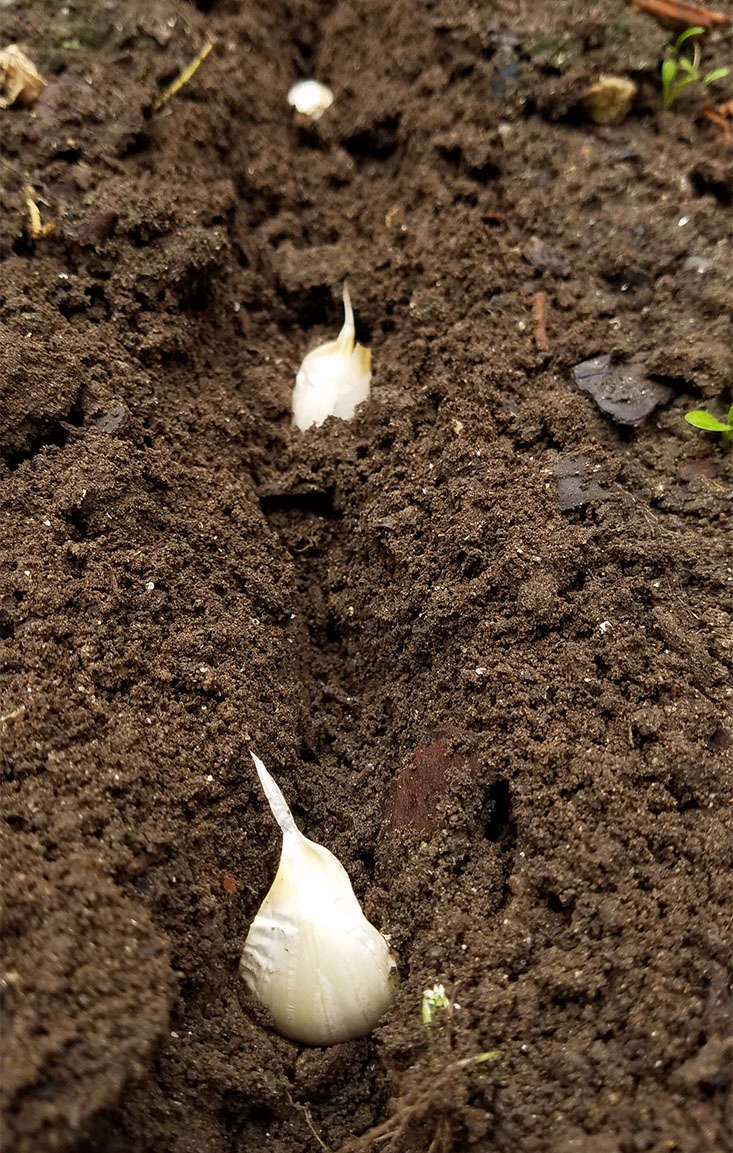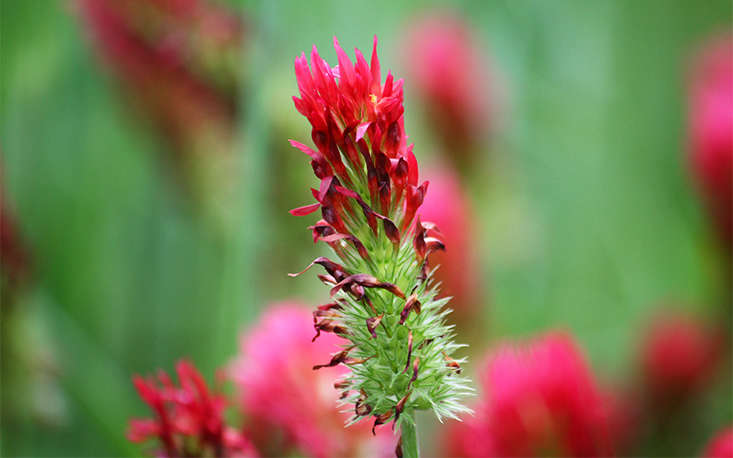Leaves are falling. Days are shrinking, nights are stretching. Autumn is not the end of gardening, but a good time to make plans, prepare, and put to bed. And perhaps grow a salad or three.
Read on for 10 fall garden chores to do now.
Photography by Marie Viljoen.

1. Empty fragile pots.

The freeze-thaw cycle in small pots can crack or shatter them. My larger terra cotta pots planted with perennials and shrubs fare better as they remain well frozen, but I do expect a casualty every year.
Store extra potting soil in a bucket that will remain under cover through winter. Tip: If you are squeezed for indoor or shed storage space, leave the container outside and simply lay a square of plastic over the top of the container and secure with a wide rubber band, to keep moisture and snow out.
2. Save leaves.

3. Order spring and summer bulbs.

4. Lift and store tender or vulnerable bulbs.

Put the bulbs in small plastic bags with a little peat moss or sawdust to absorb moisture in a dark, cold basement, or in the crisper drawer of your refrigerator. Do not seal the bags, or too much moisture will collect and cause rot. Before sliding the drawer back in place, lay a piece of brown paper or a black trash bag over the bulbs, to keep out light. Check on them once a month and add fresh peat moss or sawdust if you see condensation on the inside of the bag.
5. Plant garlic.

6. Sow cool-weather greens.

Mâche (lamb’s lettuce) germinates when temperatures dip into the 50s, and overwinters well (my most lush crop was harvested in early spring, after a snowy winter). Mustards, spinach and fava beans (for their leaves only) also thrive with cold nights. Parsnips can overwinter to be pulled next spring. (See The Garden Decoder: What Is a ‘Cool-Season Crop’?.)
7. Green manure.

8. Don’t deadhead.

9. Save seeds.

10. Test and amend your soil.

To raise my garden’s pH, I have added many pounds of crushed oyster shell as well as all the egg shells my friends and I can collect. Store dry egg shells in tall containers, stomping them down occasionally with a long handled wooden spoon, to make more space. Pulverize in a food processor and dig into your garden soil.
For more ways to get your garden ready for winter, see Expert Advice: 7 Tips to Put Your Garden to Bed from Tim Callis.









Have a Question or Comment About This Post?
Join the conversation (2)